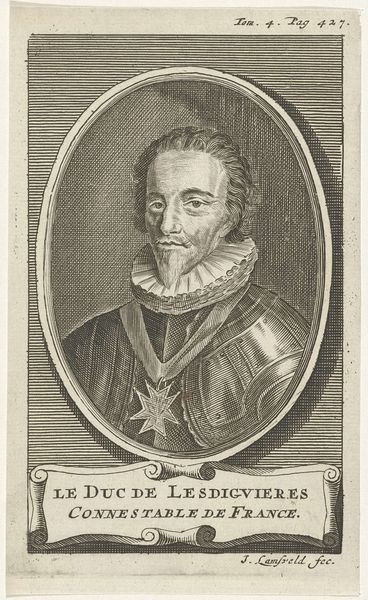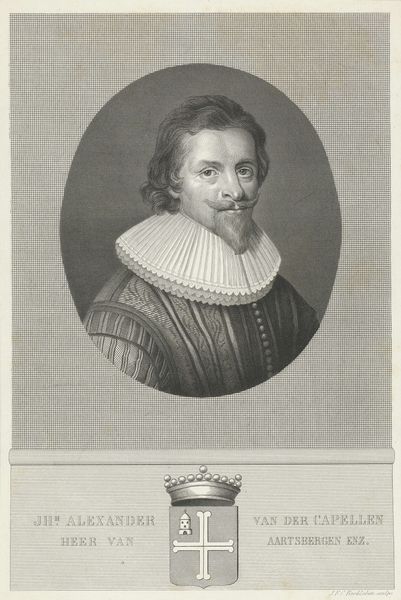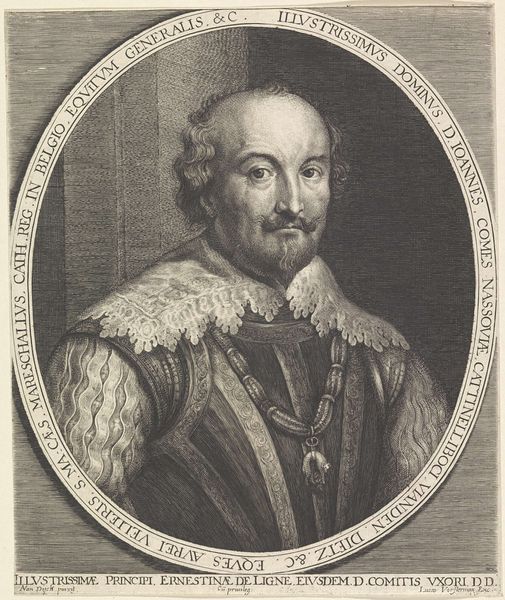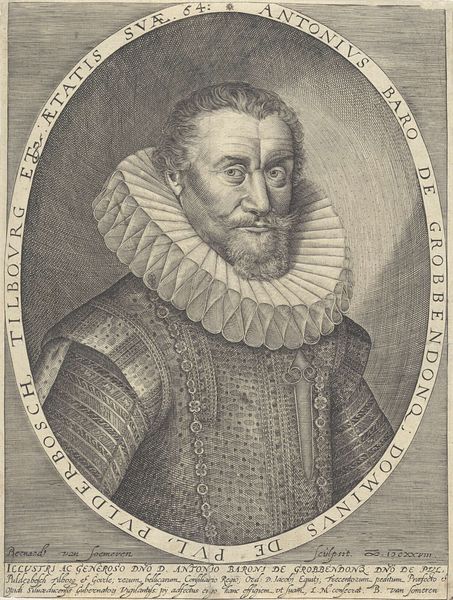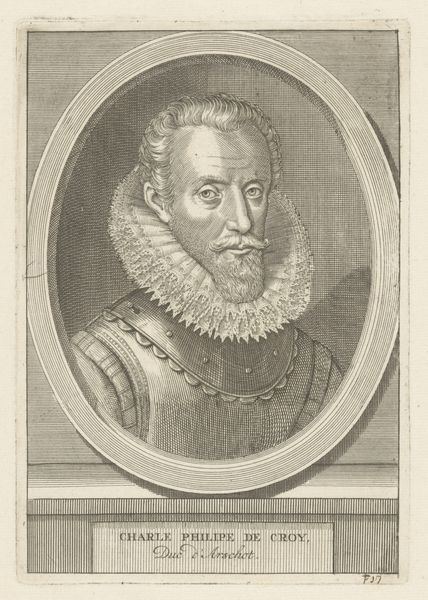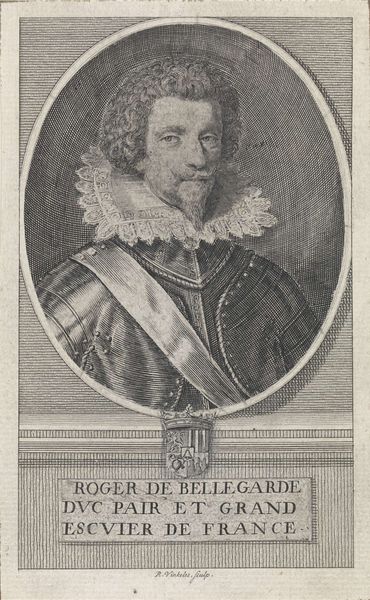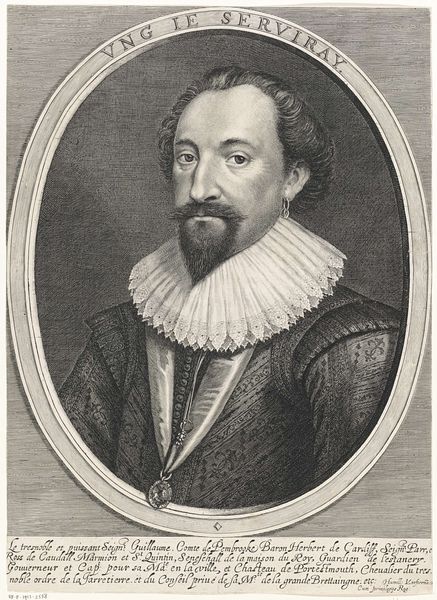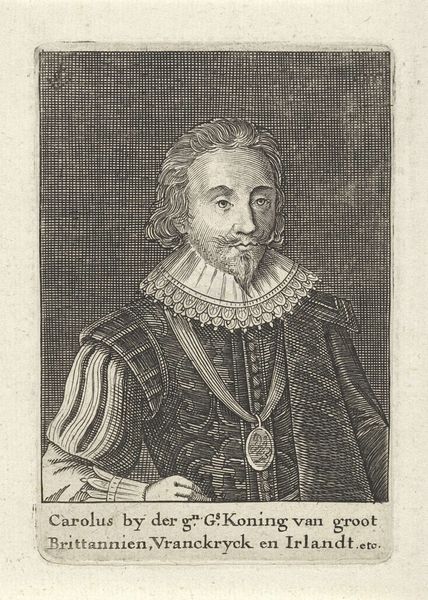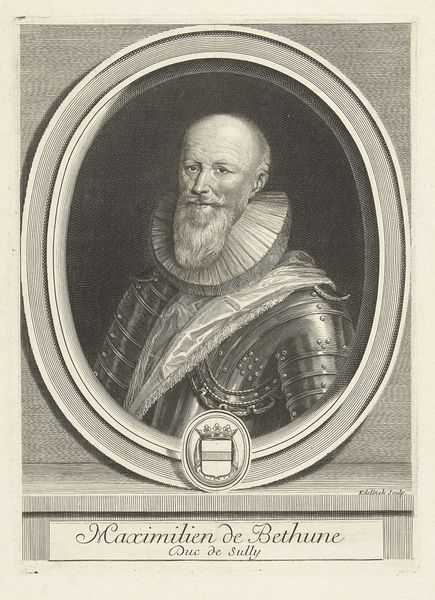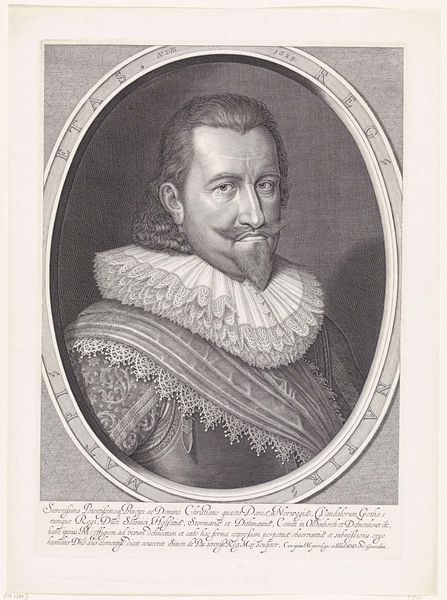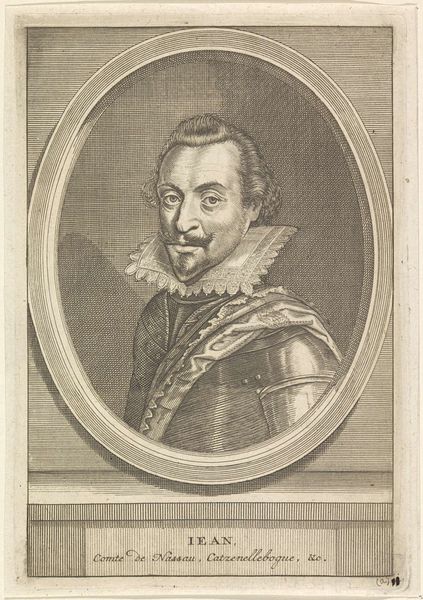
print, intaglio, engraving
#
portrait
#
baroque
# print
#
intaglio
#
old engraving style
#
caricature
#
portrait reference
#
portrait drawing
#
engraving
Dimensions: height 282 mm, width 200 mm
Copyright: Rijks Museum: Open Domain
Curator: This portrait, etched into an engraving by Pieter van Schuppen before 1701, depicts Philibert, Marquis of Nérestan. Editor: Intricate, isn't it? Though the monochrome palette lends a severity, almost like a haunting echo. You see all these incredibly detailed lines composing the image, creating such a heavy but captivating aura of times gone by. Curator: Precisely. As an iconographer, what reads the loudest to you in terms of symbols, emotions embedded in this print? Editor: I think the man himself exudes nobility through his posture. He looks down on the viewer, even as a static representation on the flat paper. This oval portrait with his armorial bearings just beneath – such potent symbols to reinforce rank, a controlled expression and all very deliberate visual messaging. What hits me, though, is his face – there’s more humanity there than I initially expected. It goes beyond caricature as it almost looks like his own perception about his existence, a little sad but resolved and in control of the given situation in life. Curator: Absolutely. The rigid format struggles, doesn't it, against something subtly rebellious in his expression? Baroque portraits are power statements first and foremost; van Schuppen perfectly plays that role by including details such as the crisp lace ruff, the prominent star medal… it all works toward establishing legacy and position. What resonates beyond that formality? Editor: Well, looking closer – especially at the rendering of light and shadow on his face. Look how every subtle intaglio mark accentuates the folds and lines that suggest character beyond just station. Van Schuppen lets a story sneak through, something more enduring about what power means – it’s there not just by title, but also experience, if you catch my drift. In truth the artist seems more successful capturing such detail through etching than actually recreating perfect symmetry of the face. This piece, while definitely made with admiration, ends up becoming more raw than regal. Curator: I see what you mean. It’s that tension which makes this more than a simple historical artifact. Thanks to you, this portrait holds another story, adding richness in his portrayal. Editor: A noble story, well told through symbols, wouldn’t you say?
Comments
No comments
Be the first to comment and join the conversation on the ultimate creative platform.
